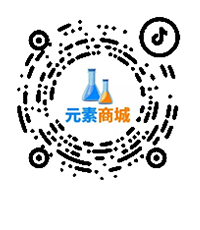Search Product
Structure Search
Search
Advantage Products
Location: Technique Support
4-(2-aminoethyl)pyridine(13258-63-4) applicationin in synthesis matriptase inhibitor
introduction:
Cancer is a leading cause of mortality worldwide. Althoughsingle tumors can often be removed by surgery or treated with chemotherapy or radiotherapy, the patients often die because of formation of metastases. Metastasis formation includes complex processes, which also require a series of proteolytic steps for degradation and remodeling of the extracellular matrix. After penetration through the basal lamina around the primary tumor, which mainly consists of collagen, glycoproteins, and proteoglycans, the tumor cells have to migrate through extracellular matrix proteins in the connective tissue and intravasate through a basal membrane into the blood or lymph system. After distribution over the whole body, tumor cells extravasate from the vascular system and form metastases at different loci. Proteases of different families, such as matrix metalloproteases and aspartate, cysteine, and serine proteases, are implicated in these processes and are also responsible for growth factor activation and angiogenesis, which are required for normal tumor growth and progression. Therefore, the development of specific inhibitors for these proteases is one possible strategy to prevent metastasis. During the past decade, extensive work has focused on the development of inhibitors for matrix metalloproteases (MMP). However, all clinical cancer trials with relatively nonspecific MMP inhibitors showed only poor efficacy.1 In addition, the urokinase-type plasminogen activator (uPA), a serine protease of the plasmin/plasminogen activator system,emerged as a potential target for antimetastatic drugs.2,3 The tumor-associated serine proteases of the plasmin/plasminogen activator system and matrix metalloproteinases are closely connected in a proteolytic cascade. uPA is assigned to be the major activator of plasmin, which in turn generates more uPA in a feedback reaction and also activates MMPs, which are responsible for the degradation of extracellular matrix proteins.
The zymogen pro-uPA can also be activated in vitro by several proteases other than plasmin, among them the cysteine proteases cathepsin B and cathepsin L, the aspartate protease cathepsin D, and the trypsin-like serine proteases plasma kallikrein, prostate-specific antigen or tryptase. Recently, it was also shown that matriptase, an epithelial-derived type II transmembrane serine protease,4 converts pro-uPA into enzymatically active uPA with high efficacy.5 In addition, matriptase is a very potent activator of hepatocyte growth factor (HGF, also named scatter factor), which acts as a major motility factor and induces
Enzymatically active matriptase was originally isolated from human breast cancer cells7,8 and in an inhibited form through binding to endogenous hepatocyte growth factor activator inhibitor-1 (HAI-1) from human milk.9 Independently, it was cloned as MT-SP1 (membrane-type serine protease 1) from a human prostatic cancer cell line.10 Matriptase (76 kDa) has a reduced size when compared with MT-SP1 (95 kDa) because of a truncation in the integral N-terminal anchor peptide. However, the catalytic serine protease domain of both enzymes is identical. Recently, the crystal structures of this catalytic domain in complex with the small inhibitor benzamidine and with the bovine pancreatic trypsin inhibitor have been published.11 Matriptase emerged as a potential target for the development of anti-invasiveness drugs to prevent metastasis due to its potential substrates pro-uPA and pro-HGF and due to its overexpression in epithelial tumors.12-14 Recently it was demonstrated that a modest orthotopic overexpression of matriptase in transgenic mice caused spontaneous squamous cell carcinoma and potentiated carcinogen-induced tumor formation,whereas increased expression of HAI-1 completely negated the oncogenic effects of matriptase.15 Presently, only a few matriptase inhibitors have been described, among them several bisbenzamidines with inhibition constants between 0.1 and 1 íM16 and a 14-amino acid peptide isolated from sunflower seeds having a Ki value of 0.92 nM.17 Recently, a selective arginalderived matriptase inhibitor (CVS-3983, Ki ) 3.3 nM) has been used to suppress the growth of androgen-independent prostate tumor xenografts.18
One of the archetypical inhibitors of almost all trypsin-like serine proteases is 3-TAPAP (1),19 which also inhibits matriptase with an inhibition constant of 14 íM. A thorough screening of other available sulfonylated 3-amidinophenylalanine derivatives led to the identification of racemic compound 2 from a previously described series of uPA inhibitors.20 Compound 2 has a Ki value of 82 nM for matriptase and reduced affinity
For further optimization of inhibitor 2, we maintained the central 3-amidinophenylalanine as a key moiety and modified the N-terminal sulfonyl group and the C-terminal secondary amide residue. These modifications resulted in a series of new compounds, which show improved potency and selectivity as matriptase inhibitors. Two analogues were selected for X-ray analysis in complex with the catalytic domain of matriptase to obtain information about their binding mode. This structural information was used for further inhibitor design. In addition, two inhibitors were investigated for their anti-invasive potential and inhibition of tumor growth in an orthotopic xenograft mouse model of prostate cancer. The results are summarized in this publication.
Process route:
.jpg)












